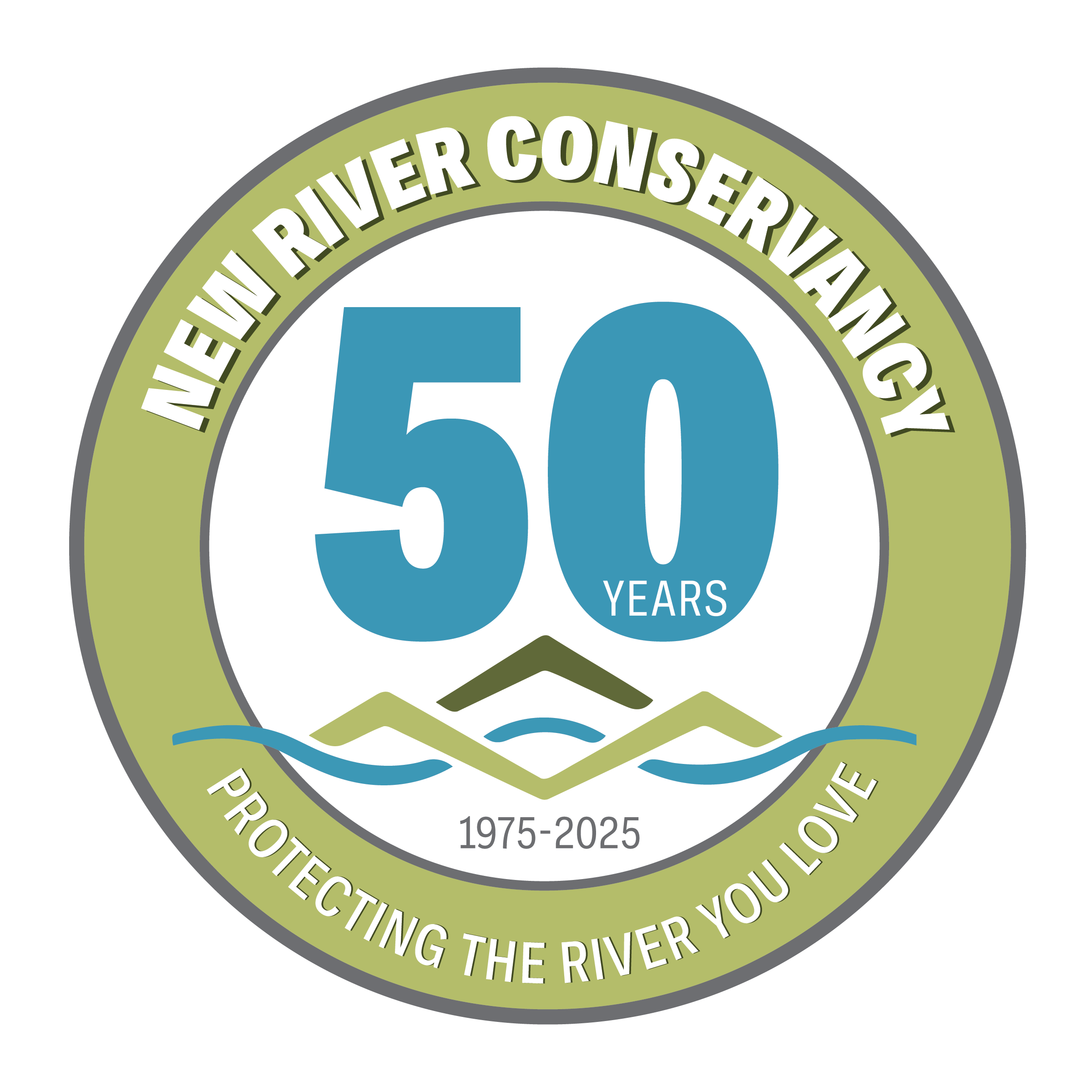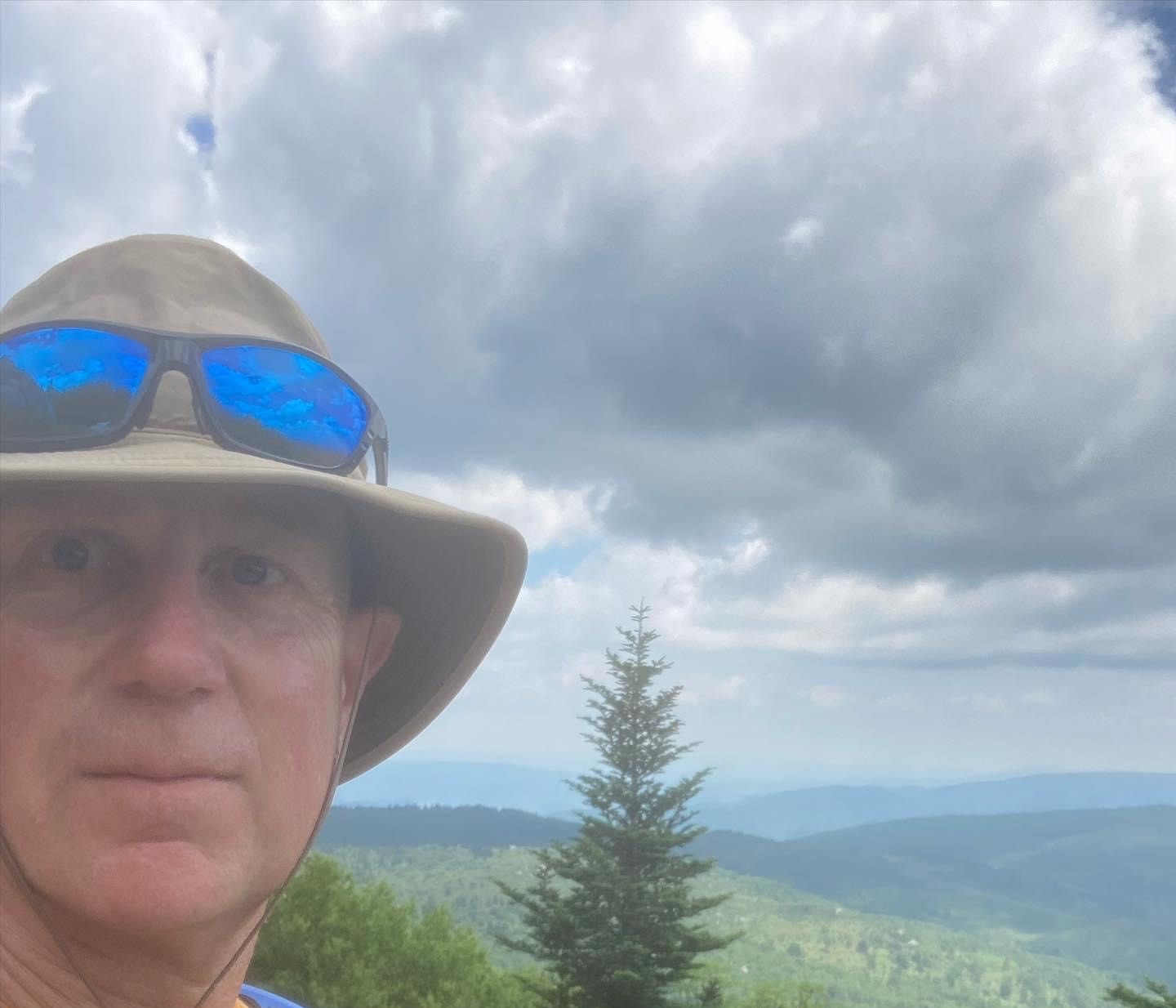“I look forward to the challenge.”
It was my distinct pleasure to spend a bit of time with Steve Trinkle on Giving Tuesday and learn more about he and his passion for volunteerism. We had a chance to chat before, during and after our interview, and I discovered Steve is quite the tireless Renaissance Man, he not only volunteers, he bikes, runs and hikes these mountains, creates beautiful woodworks, has returned to college, and is quite devoted to his family. Like many of our volunteers, Steve has a clear vision of what caring for the New River looks like and determined to meet the needs. ~ Lisa
You’ve had quite a circuitous route to the New River watershed. From Preston, Kansas to Todd, North Carolina. Can you tell us what led you to the New River Watershed?
ST: Carolyn and I had been living in the Charlotte area for a decade and our kids had grown up and departed so we started looking at locations where we could be happy retiring. We literally responded to an advertisement for a home in Ashe County. We didn’t buy that home but fell in love with the area. The New River really wasn’t on our agenda but quickly developed into one of the most important parts of our new world.
What’s your first memory of the New River?
ST: I don’t really have a clear “first” memory but I quickly developed a habit of running along the South Fork early in the mornings when the fog was hanging over the river and I could run for an hour without seeing another person. The river is incredibly peaceful.
Like many people called to volunteerism, you wear several different “hats” in regards to the organizations you volunteer for in Ashe County – Keep Ashe County Beautiful, the Blue Ridge Brutal Bike Ride, Hellbender Ride and New River Conservancy. You told me during our LIVE event on Giving Tuesday that you liked being involved in a cross-section of activities. What are the connections here?
ST: Great question. I have been very deliberate in crafting my volunteer activities. Keep Ashe County Beautiful is a lot of work for a lot of dedicated volunteers but it is all done with love for the environment. It is critical that we keep Ashe County and the whole New River Watershed litter free. Litter in the ditches will eventually find their way down to the river and it is MUCH more difficult to deal with once it gets there. Volunteering for the New River Conservancy helps satisfy my passion of both keeping the environment clean as well as protecting sensitive parts of the watershed with land conservation efforts. Regarding the bike events, I’m a lifelong recreational cyclist and runner and I like to help others to enjoy our wonderful scenery from the saddle of a bike. The organization that operates the Hellbender ride (Greater Lansing Development Organization) chose to help buy a trash trout for Big Horse Creek to keep trash from being able to get downstream. That completes the circle!
When talking about cleaning up the New River, you and I discussed mismanagement of the river from years past. How do you see that changing for your children? Will future generations thank us or wonder what in the world we were thinking?
ST: Like most people, I’m better at understanding the past than predicting the future but I think there are some leading indicators as to where events will take us. Auguste Comte said “Demographics are Destiny” and we can learn a lot from looking at demographic changes in the New River Watershed over the past 100 years. As of 2023, nearly a quarter of a million people have departed the 20 counties in the watershed since their peak population. Each of those lived in houses, likely had cars, ate food, etc. and now they are gone. Given the low immigration rate to the region and the even lower fertility rate, it appears that the reduction in people living in the central Appalachian region will continue to drop for at least another generation. Obviously, that will create a less stressful environment for the ecology of the area but we have to be concerned about the community and culture of the region with many fewer people in it.
With regard to future generations, I’m hopeful that we are both correcting some past ills and also creating a more stable future for the environment, our communities, and the New River itself.
What’s the long view of the New River in terms of conservation efforts?
ST: As of right now, about 26% of the Appalachian Region is protected by either National Parks, land trusts or other legal mechanisms. That is up from zero in 1900 and constitutes a huge change in public awareness of the importance of conserving the places that we love. Given the demographic change in many areas of the Appalachian Mountains, the NRC and other conservancies will likely have opportunities to protect more land. Tony Hiss, a very well respected conservationist and author of the book “Rescuing the Planet”, has set a target of conserving 50% of land area over time to ensure that we allow ecological systems to recover and thrive in cooperation with humans. It is a big goal but one that the NRC will be part of. I look forward to the challenge.
You’ve recently gone back to school, for which I am both envious and inspired. How is that going? Does that connect with the New River Watershed?
ST: I’m back in school mostly because I have a natural and deep curiosity itch that constantly needs scratching. My undergraduate degree is in engineering so I’m taking courses in history, criminal justice, philosophy, and anything else that looks fun. My interest in the New River and ecology in general provide a foundation that I can insert in just about any class topic.
Anything else you would like to share with us?
ST: Carolyn and I both enjoy hiking and spending time in and around the river. I expect we will continue to do so throughout the course of our adventures.


